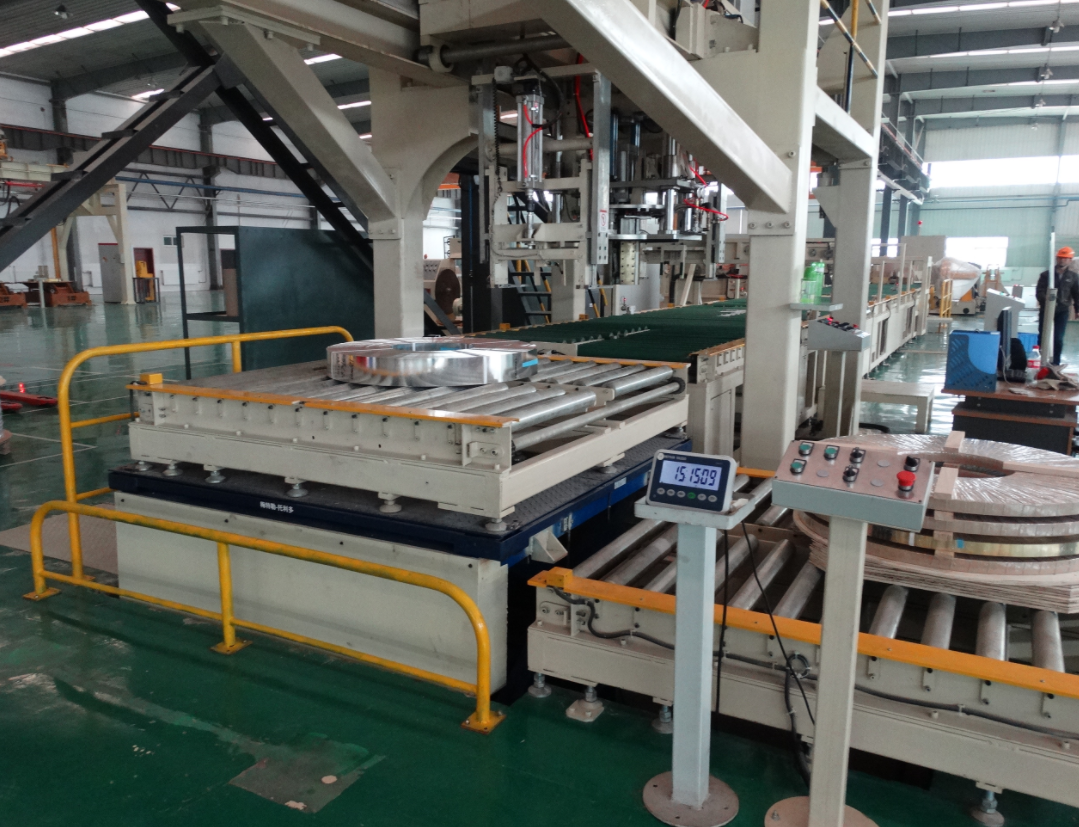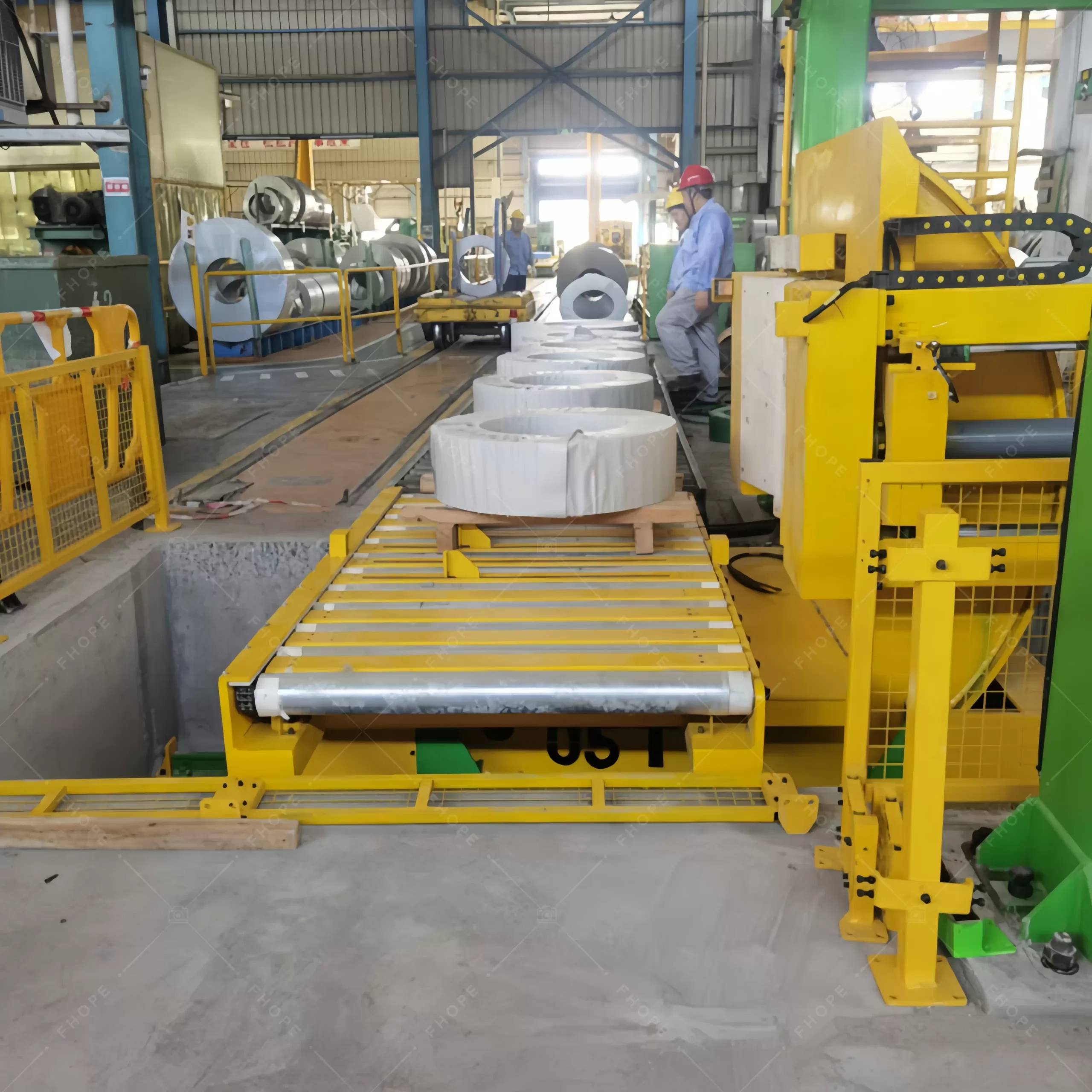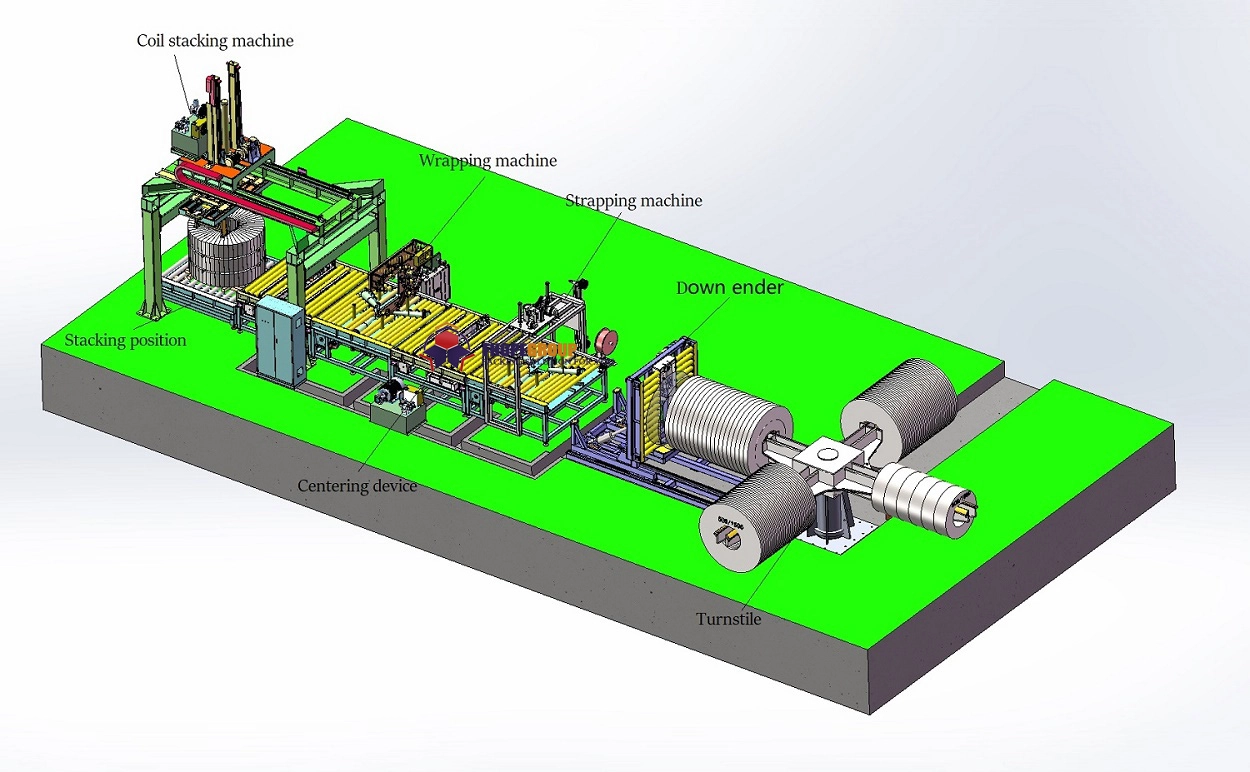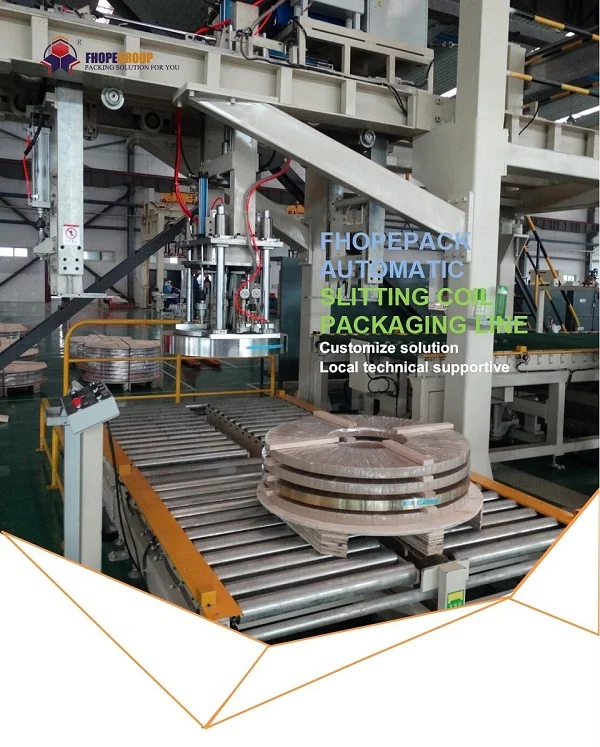Unplanned downtime on your packing line is a factory manager's worst nightmare. When the final step of your production process grinds to a halt, everything before it gets backed up. I've seen it happen many times. A simple mechanical failure on a wrapping machine can stop a multi-million-dollar steel mill in its tracks. The pressure mounts with every minute of lost production. You have delivery schedules to meet and operational targets to hit. I’ve worked with leaders like Javier Morales, a steel mill owner who set an ambitious goal of 95% equipment uptime. He knew that every percentage point gained was pure profit. The frustration of seeing aging equipment fail unexpectedly is a major source of stress and financial loss. But there is a powerful solution that many European steel mills are now embracing: real-time diagnostics. This technology can turn your reactive, fire-fighting maintenance culture into a proactive, strategic operation.
Real-time diagnostics boost uptime on Europe's steel coil packing lines by using IoT sensors to constantly monitor equipment health. This allows for predictive maintenance, which identifies and fixes potential issues before they cause unexpected shutdowns. This leads to higher efficiency, reduced operational costs, and greater production stability.

I started my career as an engineer on the factory floor. I learned firsthand how a small, ignored issue can become a massive problem. Later, when I built my own packing machine factory, SHJLPACK, I made it my mission to integrate modern solutions that solve these old problems. I’ve seen how challenging it is to manage volatile energy costs and aging equipment, especially in competitive markets like Europe. But I've also seen the incredible impact of smart technology. It's not about magic; it's about information. It’s about giving your machines a voice to tell you what they need, before they break down. Let’s break down exactly how this works and what it can mean for your bottom line.
What Exactly Are Real-Time Diagnostics in Coil Packing?
You hear terms like "Industry 4.0," "IoT," and "Big Data" all the time. They can sound complex, academic, and maybe even a bit intimidating. It's easy to think they don't apply to the heavy-duty world of steel packing. You might feel that sticking with what you know is the safer bet. But while you hesitate, your competitors are using this technology to get an edge. They are cutting costs, improving reliability, and delivering to their customers on time, every time. The good news is that the concept is much simpler than the buzzwords suggest. Real-time diagnostics are just your machines communicating with you. They tell you exactly how they are performing, right now, in clear and simple terms.
Real-time diagnostics in coil packing refer to a system of sensors and software that continuously collect and analyze data from your machinery. Key metrics include motor temperature, vibration levels, hydraulic pressure, and cycle times. This data provides an instant, clear picture of the line's operational health.

From Reactive to Proactive
For decades, the standard approach to maintenance was reactive. A machine runs until it breaks, then a team scrambles to fix it. This is the most expensive and disruptive way to manage equipment. It leads to maximum downtime and high costs for emergency parts and labor. The next step up was preventive maintenance, where parts are replaced on a fixed schedule. This is better, but you often end up replacing parts that are still perfectly good, which is a waste of money.
Real-time diagnostics enable a proactive strategy: predictive maintenance. Instead of guessing when a part might fail, you know. The system analyzes data trends and alerts you to a problem long before it causes a failure. This is a complete shift in mindset, from "fix what's broken" to "prevent it from ever breaking."
The Core Components of a Diagnostic System
A smart diagnostic system isn't one single thing. It's a combination of hardware and software working together. I help clients understand that you don't need to be a tech expert to use it. You just need to know what it does for you.
| Component | Function | Benefit for a Steel Mill Owner |
|---|---|---|
| IoT Sensors | Small devices that measure physical conditions like vibration, temperature, and pressure. | They are the eyes and ears on your machine, detecting early signs of wear on a motor or a loose bearing. |
| PLC Controller | The central brain that gathers all the sensor data and controls the machine's actions. | It acts as the data hub, ensuring all information is collected accurately for analysis. |
| HMI (Human-Machine Interface) | The screen or dashboard where operators see the data presented in a simple, visual format. | It turns complex data into clear alerts like "Motor temperature is high" or "Vibration levels are rising." |
| Analytics Software | A program (on-site or in the cloud) that analyzes data to find patterns and predict failures. | This is where the magic happens. It tells you what will fail and when, so you can plan repairs. |
I remember a client, much like Javier, who was running several older packing lines. He was skeptical about the return on investment for a "smart" upgrade. We started small and retrofitted just one of his main wrapping machines with a basic diagnostic kit focused on vibration and temperature. Less than two months later, the system sent an alert about an overheating motor. The maintenance team found a lubrication issue, fixed it in 30 minutes during a scheduled pause, and prevented a motor burnout that would have taken the line down for days. He called me that afternoon and said, "Okay, Vincent. I get it now. Let's do the other lines."
How Do Predictive Maintenance Alerts Prevent Costly Failures?
Imagine this scenario. It's the end of the quarter. Your team is pushing hard to meet production targets. Suddenly, the main strapping head on your coil packing line seizes up. A critical bearing has failed without warning. The entire line stops. Your shipping yard starts to back up with unpacked coils. The clock is ticking. Now you are facing a cascade of problems. You have to pay for emergency repairs, call in maintenance staff for overtime, and explain to your customers why their orders will be late. A single small component failure has spiraled into a multi-thousand-dollar problem. Predictive maintenance alerts are designed to prevent this exact situation. They turn a chaotic emergency into a calm, scheduled, and low-cost task.
Predictive maintenance alerts prevent costly failures by analyzing real-time data to forecast when a component is likely to fail. The system sends a specific alert, such as "Vibration signature on bearing B-102 indicates 80% wear, recommend replacement within 72 operating hours," which allows maintenance to be scheduled before a catastrophic breakdown occurs.

The Anatomy of a Predictive Alert
This isn't just a simple alarm bell. A true predictive alert is an intelligent piece of information. It follows a clear, data-driven process that I've seen implemented with incredible success.
- Sensing: A vibration sensor on a gearbox continuously measures its operational signature.
- Analysis: The system's software compares this live data against a baseline model of healthy operation. It detects a tiny, but growing, deviation from the norm.
- Prediction: The algorithm recognizes this deviation as the early stage of gear tooth wear. Based on the rate of change, it predicts a probable failure window—for example, in the next 150-200 operating hours.
- Alerting: It doesn't just sound a siren. It sends a detailed message to the plant manager and maintenance supervisor's dashboard or phone. The message is specific: "Gearbox #3 output shaft shows wear pattern. Recommend inspection and oil analysis at next planned downtime."
- Action: The maintenance team adds this task to their weekly schedule. They inspect the gearbox during a planned stop, confirm the wear, and schedule a replacement for the weekend. Production is never interrupted.
Comparing Maintenance Strategies
For business owners who focus on the numbers, the value becomes clear when you compare the different approaches side-by-side. The goal for any modern steel mill should be to move as far to the right of this table as possible. This is how you achieve goals like 95% uptime and an 8% reduction in operating costs.
| Maintenance Strategy | Description | Cost Impact | Uptime Impact |
|---|---|---|---|
| Reactive | "Run to failure." Fix equipment only after it breaks down completely. | Very High. Involves emergency repairs, overtime labor, and expensive lost production. | Low. Frequent, long, and unpredictable downtimes. |
| Preventive | Time-based. Replace parts on a fixed schedule, regardless of their actual condition. | Medium. Reduces unexpected failures but incurs costs from replacing healthy parts and unnecessary labor. | Medium. Uptime is better, but still susceptible to failures that occur between scheduled services. |
| Predictive | Condition-based. Use real-time data to predict failures and perform maintenance only when needed. | Low. Optimizes part lifespan, minimizes labor, and virtually eliminates unplanned downtime costs. | High. Maximizes equipment availability, pushing uptime towards the 95% benchmark. |
This is especially critical in Europe, where high labor costs and fierce competition mean the financial penalty for downtime is severe. A stopped line in Germany or Italy costs far more per hour than in many other regions. This makes the ROI for predictive systems incredibly compelling there, and the lesson is universal for any high-capacity operation worldwide.
Which Data Points Are Most Critical for Optimizing Packing Line Performance?
So, you are convinced. You are ready to install sensors and start collecting data from your packing line. But a new problem emerges: you are suddenly flooded with information. You have data on motor speed, temperature, pressure, voltage, and a dozen other things. What should you actually be looking at? Collecting the wrong data, or getting lost in the numbers, is just as bad as collecting no data at all. It wastes time, confuses your team, and doesn't lead to the improvements you need. Through my years of designing, building, and troubleshooting these machines, I've learned to filter out the noise. I focus my clients on the "vital signs" of a packing line—the few key metrics that give you 80% of the insights you need with 20% of the effort.
The most critical data points for optimizing a steel coil packing line are vibration analysis for mechanical health, motor temperature and current draw for electrical efficiency, hydraulic pressure for actuator performance, and cycle time tracking for overall throughput. These metrics provide a comprehensive view of both machine health and operational efficiency.

Focusing on the "Vital Signs"
Think of your packing line like a patient in a hospital. You don't need to monitor every single cell to know if they are healthy. You check their heart rate, blood pressure, and temperature. For a packing line, the vital signs are very similar.
- Vibration Analysis: This is the single best indicator of mechanical health. A healthy machine has a smooth, consistent vibration signature. Any change—even a very small one—can indicate a problem like bearing wear, shaft misalignment, or a loose bolt. Catching these changes early is the key to preventing major mechanical failures.
- Temperature and Power Consumption: Overheating is a clear sign of trouble. It can be caused by electrical issues, friction from worn parts, or poor lubrication. Monitoring motor temperature and the amount of electrical current it draws can tell you a lot. If a motor suddenly starts using more power to do the same job, it's working too hard. This points directly to an inefficiency that is wasting energy and will eventually lead to failure. For a mill owner concerned with high electricity costs, this data is gold.
- Hydraulic & Pneumatic Pressure: Many packing lines use hydraulic or pneumatic systems for strapping, lifting, and clamping. A slow drop in pressure can indicate a small leak that is hard to spot. This leak makes the pump work harder, wastes energy, and can lead to inconsistent packing quality or a sudden failure of the system.
- Cycle Times: This metric isn't about machine health, but about production efficiency. How long does it take to wrap one coil? How long does the strapping process take? By precisely measuring the time for each step, you can instantly identify bottlenecks.
From Data to Actionable Insights
The goal isn't just to have data; it's to turn that data into action. This is how you connect monitoring to real-world improvements in cost, quality, and throughput.
| Data Point Anomaly | Potential Problem | Actionable Insight for Management |
|---|---|---|
| Gradual increase in wrapper motor vibration. | A key roller bearing is beginning to fail. | Schedule the replacement of the specific bearing during the next planned maintenance window. |
| A sudden 10% spike in energy use per coil. | The wrapping film is dragging or a part is misaligned, causing excess friction. | Order an immediate inspection of the film dispenser and conveyor rollers to find and fix the source of friction. |
| The strapping cycle time has increased by 2 seconds. | There is a slow leak in the hydraulic system that powers the strapper. | Instruct the maintenance team to perform a pressure check and inspect all hydraulic lines and fittings. |
| The time between coils entering and exiting the line is inconsistent. | There is a bottleneck in the system, likely at the labeling or palletizing station. | Analyze the cycle times of each station to pinpoint the slowest step and focus improvement efforts there. |
I once worked with a client who was convinced their main wrapping machine was the bottleneck in their line. They were ready to invest in a faster, more expensive model. Before they did, we installed a simple cycle time tracking system. The data showed that the wrapper was actually waiting for coils most of the time. The real bottleneck was the slow, outdated conveyor system that fed coils into the line. A simple, low-cost upgrade to the conveyor controls increased their total throughput by over 15%. The data saved them from a huge, unnecessary investment.
What Is the ROI on Upgrading to a Smart Packing Line?
As a business owner, I understand that every decision comes down to the numbers. You have to answer to your partners and your bank. A proposal to upgrade equipment or retrofit an entire line with smart technology sounds expensive, and the upfront cost can make anyone hesitate. But I always ask my clients, like Javier, to consider the alternative. What is the cost of not upgrading? The cost of unplanned downtime, wasted energy, and emergency maintenance adds up fast. It's a hidden tax on your profits. When you do the math, the return on investment (ROI) for a smart packing line is often faster and much larger than people expect. It's a strategic investment in efficiency and stability.
The ROI on upgrading to a smart packing line is typically realized within 12-24 months. It is calculated by adding the total savings from reduced unplanned downtime, lower maintenance labor and parts costs, and decreased energy consumption, then comparing this sum to the initial investment cost.

Calculating the Tangible Returns
Let's make this practical. You don't need a complex financial model to get a good estimate. You can do a back-of-the-envelope calculation based on a few key areas.
- Downtime Savings: This is the biggest contributor. First, calculate your cost of downtime per hour. This includes lost revenue from production, the cost of idle labor, and any potential penalties for late shipments. Let's say it's €5,000 per hour. If a new diagnostic system helps you avoid just 10 hours of unplanned downtime per year, that's an immediate saving of €50,000.
- Maintenance Savings: Compare the cost of an emergency, middle-of-the-night repair to a planned, scheduled one. The planned repair uses regular-time labor and standard-priced parts. The emergency involves overtime pay and rush shipping fees for parts. Predictive maintenance also eliminates unnecessary preventive work, saving on both parts and labor. This can easily save another €15,000-€20,000 per year on a single line.
- Energy Savings: A smart system helps you identify and fix inefficiencies that waste electricity and compressed air. By tracking power consumption per coil, you can target these issues. Achieving a 5-10% reduction in the packing line's energy use is a very realistic goal. For a large mill, this translates into thousands of euros saved annually.
When you add these savings together, an investment that might have seemed large now looks much more manageable, with a clear payback period.
The Intangible Benefits
Not every benefit fits neatly on a spreadsheet, but they are just as important for a forward-thinking leader.
- Improved Safety: Predictive maintenance means fewer emergency repairs, which are often rushed and performed under pressure. A planned, controlled repair environment is a safer one for your team.
- Consistent Quality: A well-maintained machine that operates within its ideal parameters produces a more consistent, higher-quality package. This reduces product damage and enhances your brand's reputation.
- Greater Client Trust: When you can reliably deliver on time, you become a preferred supplier. This stability is a powerful competitive advantage.
- Future-Proofing Your Operation: This is perhaps the most important intangible. By adopting this technology, you are building the foundation for the fully connected, data-driven factory of the future. You are preparing your business not just to survive, but to thrive.
For a steel mill owner like Javier, who has goals to increase uptime to 95% and reduce operating costs by 8%, this isn't just an option. It's the only viable path forward. I've seen it work for my clients across the globe, from Mexico to Germany. The technology provides the roadmap to achieving those ambitious but essential targets.
Conclusion
Real-time diagnostics are not a future luxury; they are a present-day necessity for survival and growth. Investing in this technology protects your uptime, lowers costs, and secures your future.





